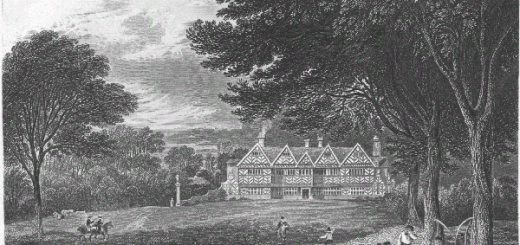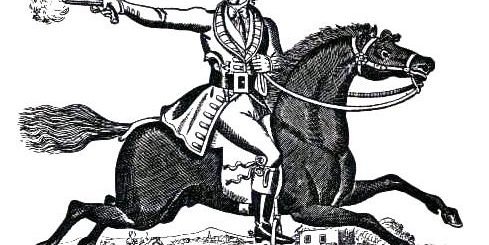Kenton Theatre, Henley on Thames
The Kenton Theatre in Henley on Thames dates from 7 November 1805 and is thought to be the fourth oldest working theatre in Great Britain. With a 234 seat capacity the theatre is small and run by a group of volunteers. It is also a location where haunting like activity has been reported.
The building itself has not always been used as a theatre. After eight years the theatre closed and in 1813 became a chapel. It did not re-open as a theatre until 1935 and had by that time also been utilised as a church hall, school and storeroom.
 In his book ‘The Ghosts’ Who’s Who’ (1977), Jack Hallam says that the ghost of Mary Blandy, was ‘once seen at Henley’s Kenton Theatre, standing at the back of the stalls as if watching a performance of The Hanging Tree, a play based on her crime’
In his book ‘The Ghosts’ Who’s Who’ (1977), Jack Hallam says that the ghost of Mary Blandy, was ‘once seen at Henley’s Kenton Theatre, standing at the back of the stalls as if watching a performance of The Hanging Tree, a play based on her crime’
Mary Blandy was executed on 6 April 1752 for poisoning her father. Two hundred years later, in 1950, the novelist, actress and playwright Joan Morgan (Born 1 February 1905 – Died 22 July 2004) wrote a play about her called The Hanging Wood (not The Hanging Tree as Hallam suggested). Though the play was adapted for the BBC in 1977, The Hanging Wood was only performed once on stage and was not well received. This was in 1969, the performance which the ghost was said to have attended.
With the start of rehearsals, strange things reputedly started to occur, including doors opening and closing, lights switching on and off, a large mirror jumping off a wall and items being smashed by what has been described as poltergeist activity.
As mentioned by Hallam, the apparition of a young woman was seen at the back of the theatre watching the rehearsals and vanished when approached. A cup was also reputedly seen rising from a table before dropping and smashing whilst cast members were discussing Miss Blandy.
On the Henley Operatic website Bill Port recounts Mary’s next visit to the theatre. ‘Mary Blandy appeared at the Kenton on the night of Saturday 10th April 2004. A party from the Ghost Club Society accompanied by Bryan Villars and myself spent the night in the complete dark of the auditorium. At around 2.45 am we all saw a mysterious light about four feet in height moving up and down the aisle. A photograph was taken by the GCS secretary. Later a questioning session was held and the ‘ghost’ claimed to be Mary Blandy. Asked why she had come to the theatre the reply was that she had come to see a play about herself which she did not like. Later checking revealed that a play called “The Hanging Wood” by Joan Morgan about Mary Blandy had been performed in the theatre in 1969.




Re: Kenton Theatre, Henley on Thames
The haunting experiences associated with the Kenton Theatre are amongst the most interesting I have read, but I do have some questions. Were there any experiences reported between 1969 and the Ghost Club investigation of 2004. If not why the investigation? If it was being done to be close to the anniversary of her death (only 4 days out) and to follow up on the experiences of 1969, why would later checking only reveal the ill fated production behind the experiences and as they were well known (as shown, Hallam wrote about it 30 years earlier) any psychic or calling out experiments to contact Blandy should surely be discredited.
If Mary Blandy haunted The Hanging Wood production at the Kenton, it would mean she made a conscious decision to attend a play written 200 years following her execution in a theatre that opened 50 years after her death and then offered her critique of it 35 years later when supposedly contacted in 2004. Therefore it would imply that she is fully aware of her surroundings, can interact with them and even keep abreast of local entertainment listings. This probably ties in nicely with most spiritual beliefs, but I am unsure whether ghosts actually operate like this and the significant events that happened at the Kenton may be related to an unknown ghost. The author Andrew Green seemed to share these misgivings suggesting it was an “irrational belief” that the ghost could be Mary.